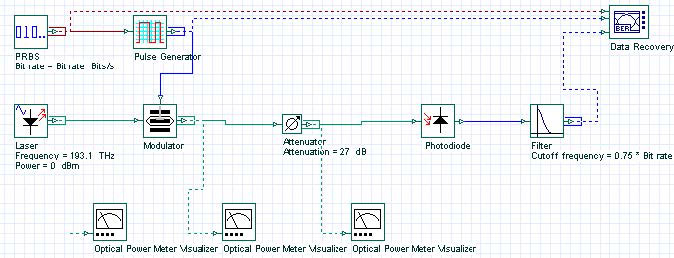The purpose of power budget is to ensure that enough power will reach the receiver to maintain reliable performance during the entire system lifetime. The minimum average power required by the receiver is the receiver sensitivity. The average launch power is generally specified for each transmitter with optical powers expressed in dBm.
In order to estimate the maximum fiber length we should specify the output power of the transmitter and the receiver sensitivity. We can also specify a system margin. The purpose of the system margin is to allocate a certain amount of power to additional sources of power penalty that may develop during the system lifetime.
System Design – Power Budget.osd (see Figure 4) shows a system designed using a receiver with -30 dBm sensitivity and an external modulated transmitter with output power of -3 dBm.
Figure 4: Power Budget
Using a system margin of 0 dB the total loss allocated for the channel will be:
- Channel Loss = System Margin + Receiver Sensitivity + Transmitter power
- Channel Loss = 30 – 3 = 27 dB
For a typical fiber attenuation of 0.25 dB/km, the maximum distance we can propagate in this system is 108 km. In this case, we are not including dispersion effects that will limit the system performance.


